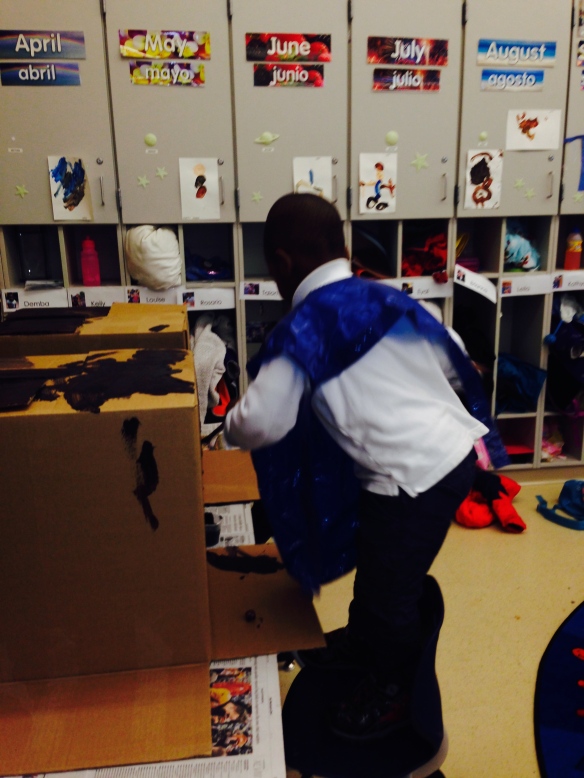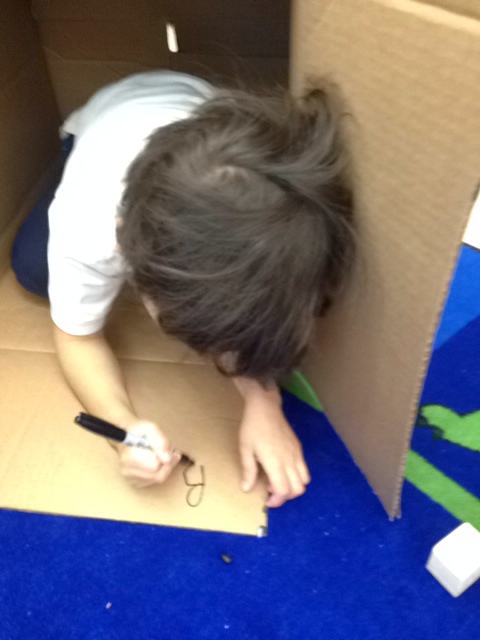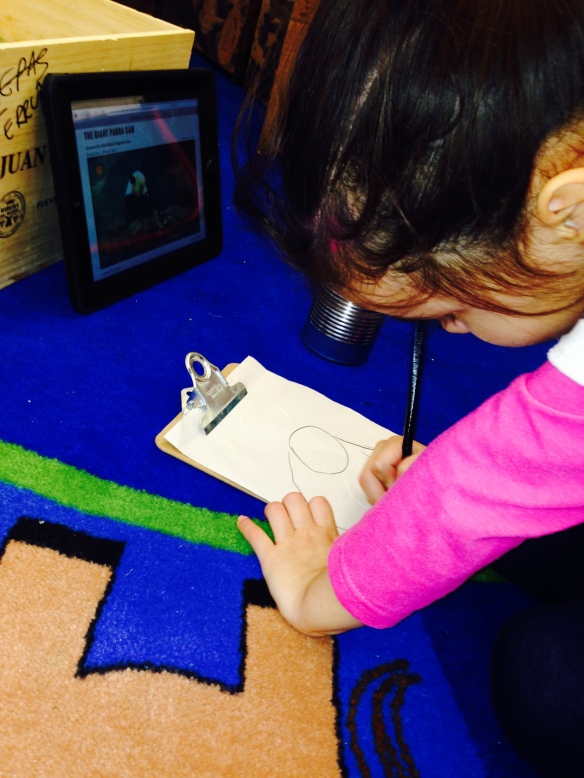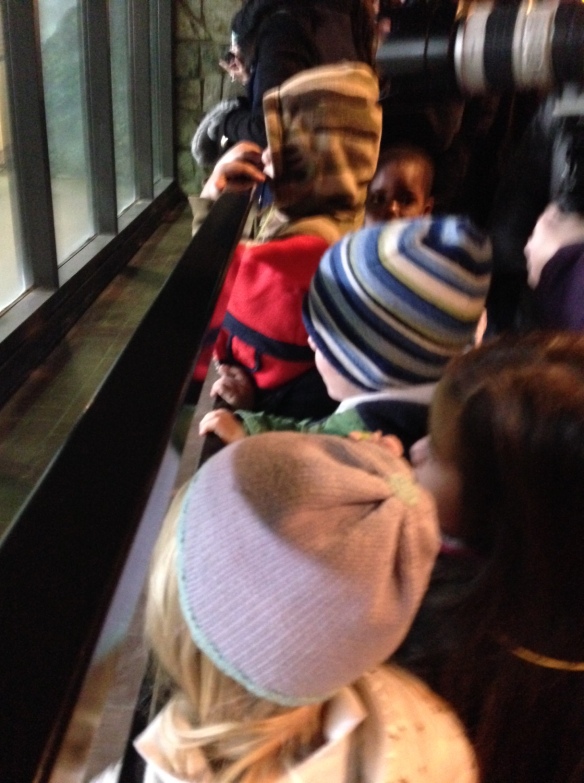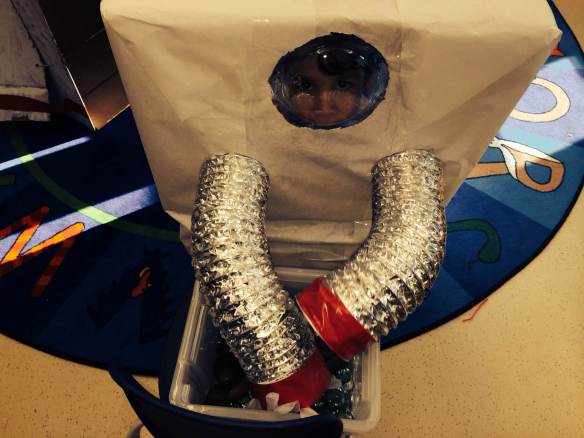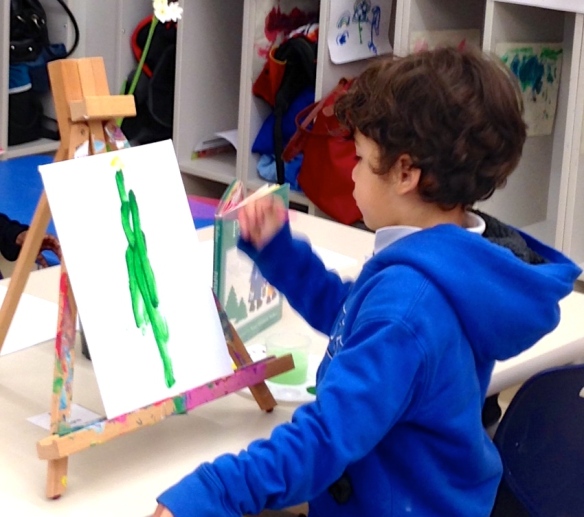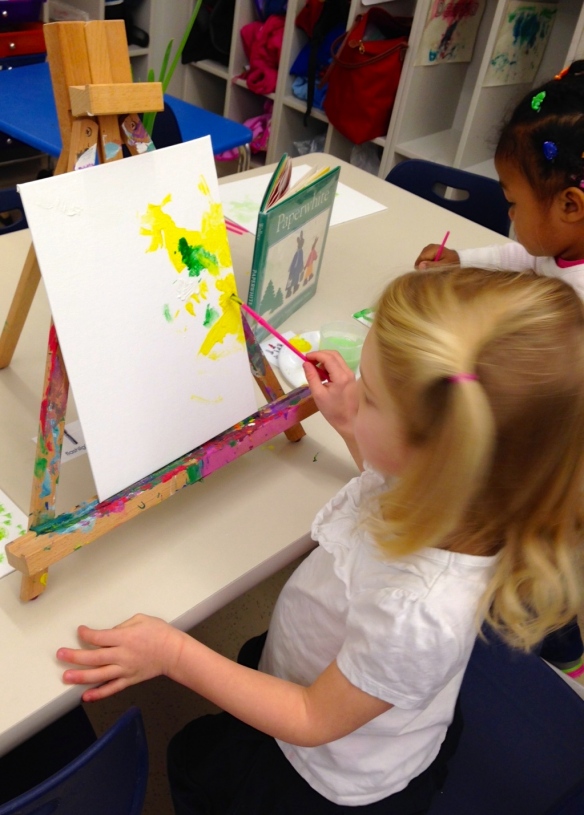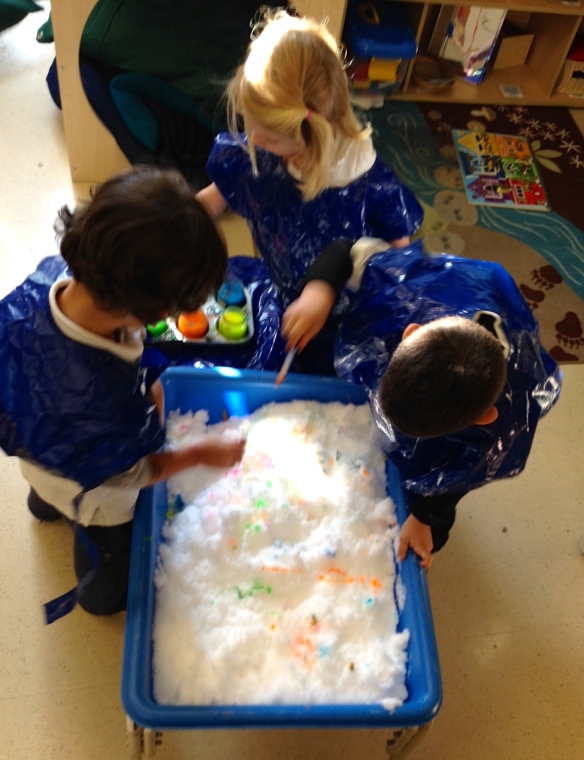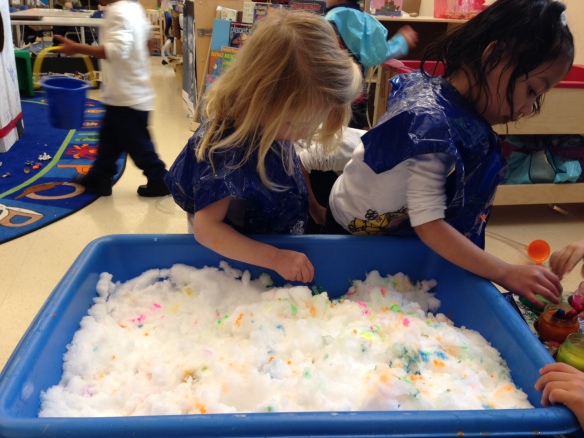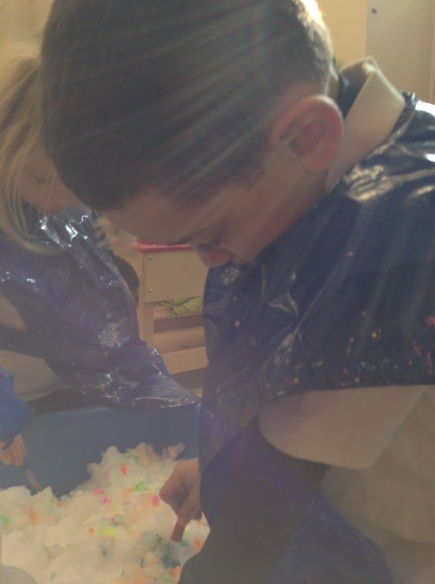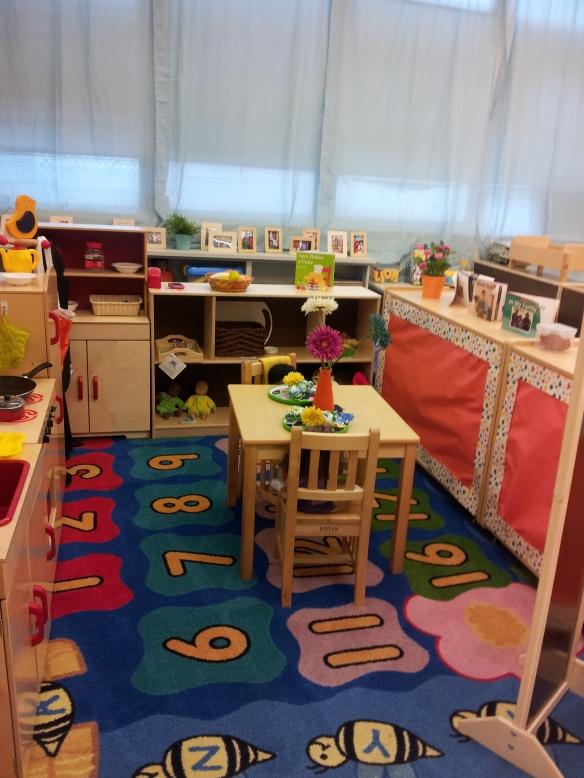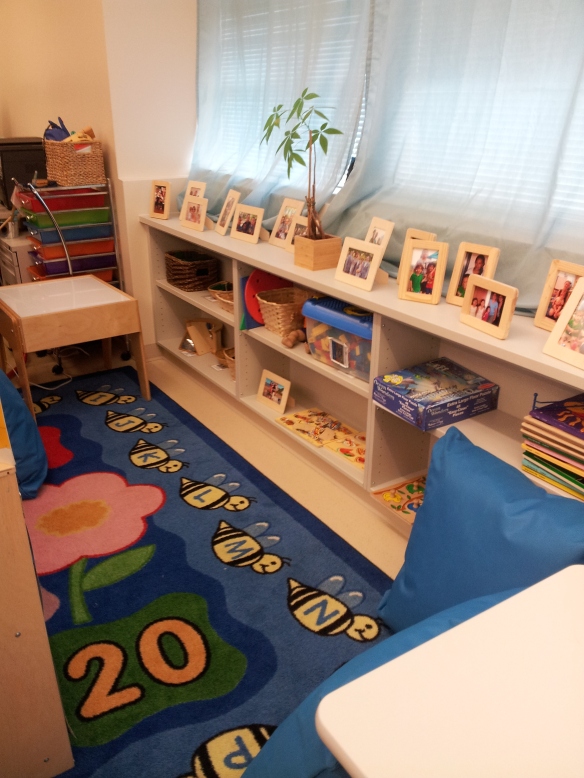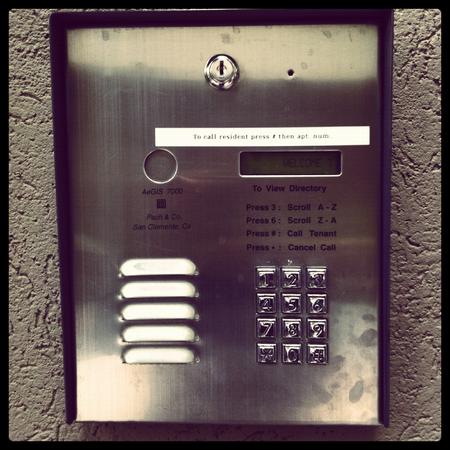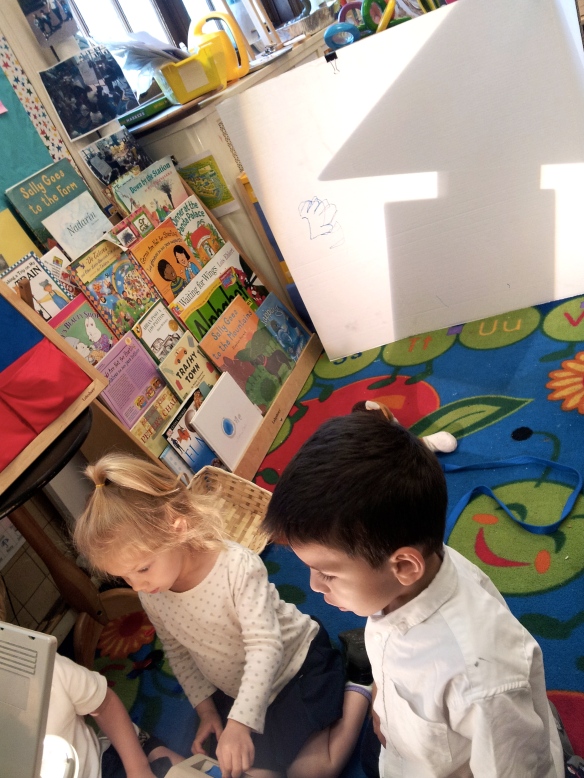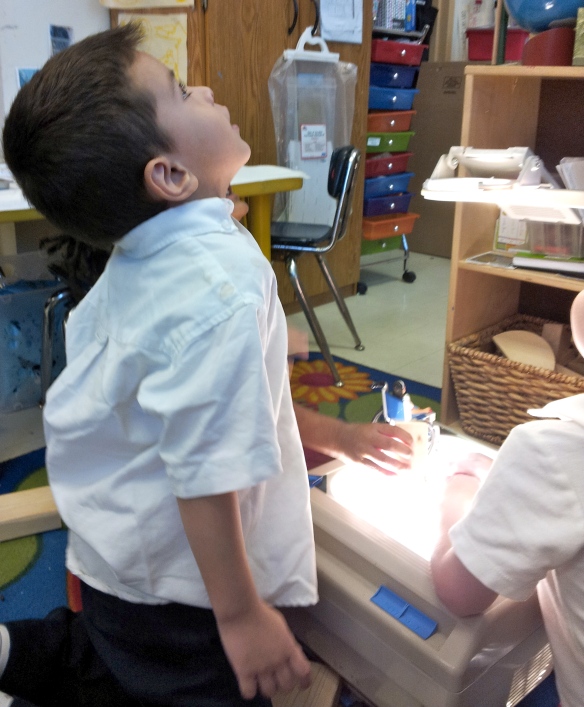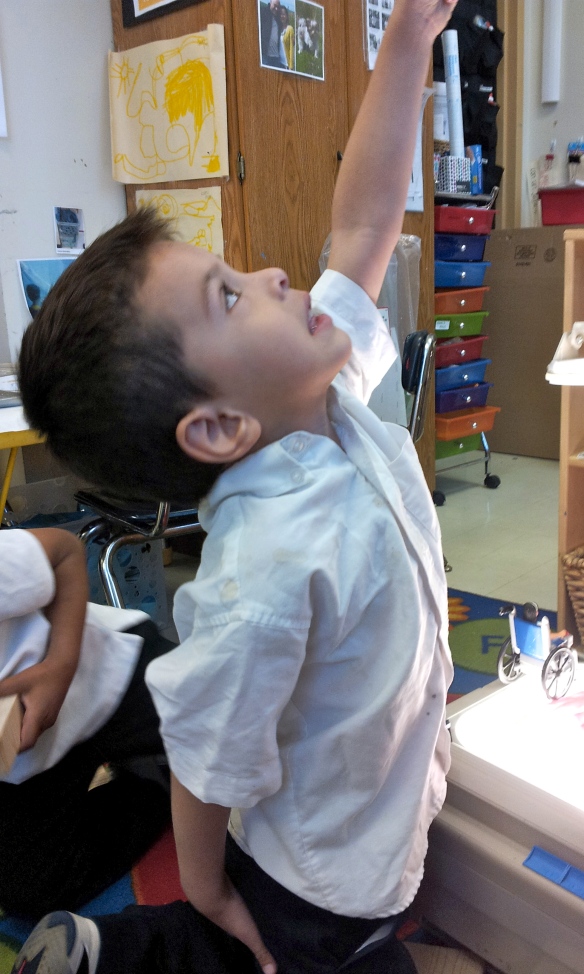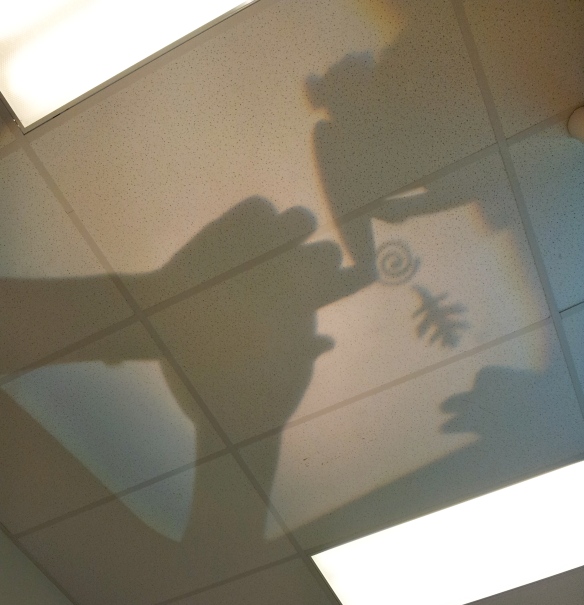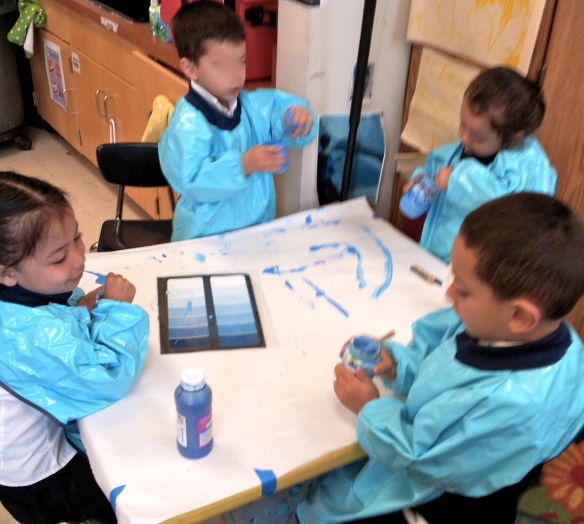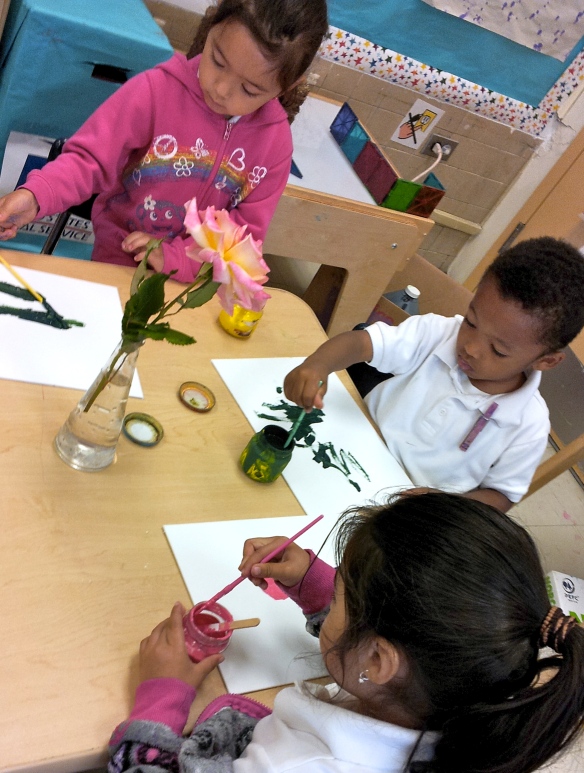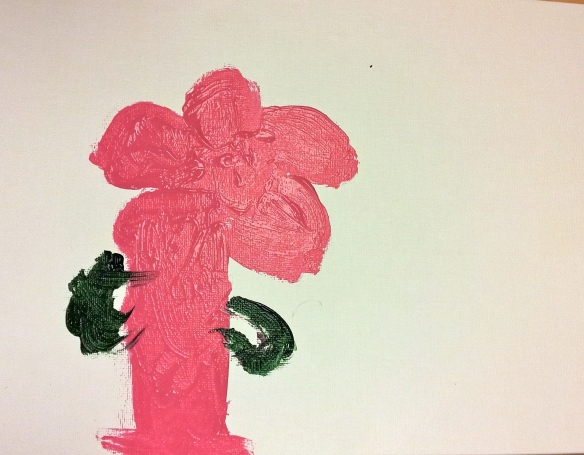The children were showing an interest in pets, and we planned a field trip to Petco to tour the store and see my dog get groomed. We decided to also go to the National Zoo, though it would be cold. Prior to the trip, we talked about the indoor exhibits at the zoo, and the children voted on which exhibit they wanted to see. One of the children had already seen Bao Bao, the National Zoo’s panda cub, and excitedly talked about him. We asked each child what he/she preferred, and tallied the results together. The children voted to visit the panda exhibit first, and then the reptile house. We were lucky to visit on such a cold day because there were so few people there, and we were able to watch Bao Bao, Mei Xing and Tian Tian for a while (which I mentioned here). I thought that this would lead to a conversation between which animals would make good pets and which would not, but the children had other interests…
A conversation before nap time:
Child: What is that dark thing?
Me: What dark thing?
Child (I noticed he was looking at a photograph from the zoo): See it? There by the panda?
Me: Oh that’s like a cave that the panda goes into. It’s called a den. Should we make one?
Child: YES!
First we painted two large boxes black, and then compared the boxes against our photographs. We noticed that the real dens “were brown with rocks” on the outside, and then painted rocks on our dens.
The giant pandas at the National Zoo are named Bao Bao, Mei Xing and Tian Tian. We labeled two of the dens for Bao Bao and Mei Xing. We pretended we were pandas, and that citiblocks were the rocks that Mei Xing often lays on and that PVC pipes were bamboo.
A child was pretending to be Mei Xing, laying on “rocks” and “eating” bamboo. She got upset because another child was playing with her bamboo.
Me: Can he be Bao Bao? What does Bao Bao do?
Child: She crawls just like Mei Xing but a little slower.
I am very conflicted about the use of technology in the preschool classroom, and try to limit it as much as possible. The smart board in my classroom is hidden behind a shower curtain (and also is much too high for my children). However, we did watch the Smithsonian’s panda cam to make observations of Mei Xing and Bao Bao during centers, and they drew what they saw (or acted it out). We wondered out loud about the giant pandas, and kept a list of our questions. One child wondered if pandas had belly buttons. We made predictions and answered our questions using non-fiction texts (pandas do not have belly buttons, at least that we could see :).
My co-teacher and I went to see the amazing Lillian Katz last week, and I have been re-reading her book and reflecting on the project approach (here are some great tip sheets). This is the kind of child-directed learning that I love to do, and I hope by offering children more opportunities to make their thinking and learning visible, we can continue to learn together. I am finishing my first documentation panel of this learning adventure!


